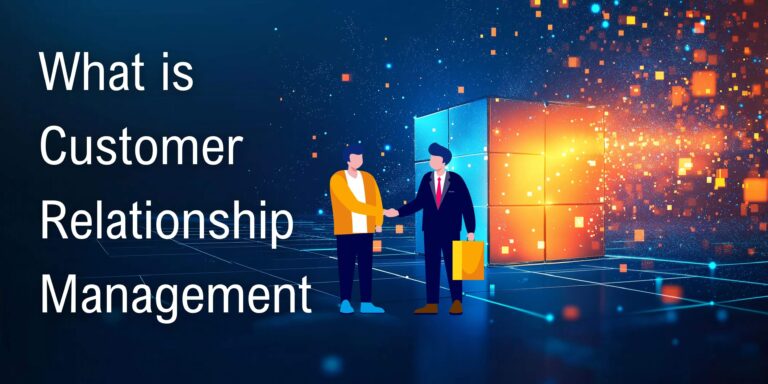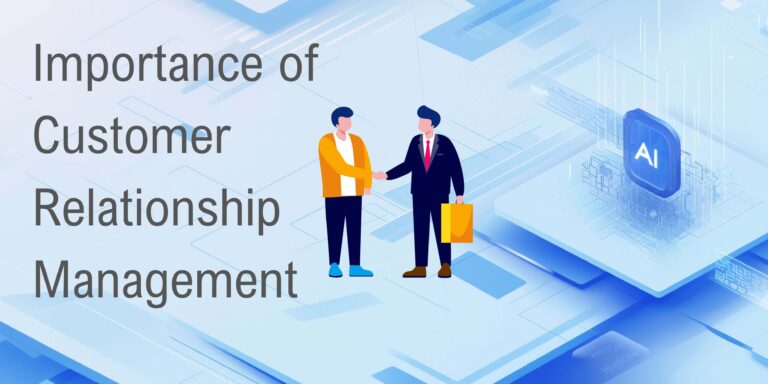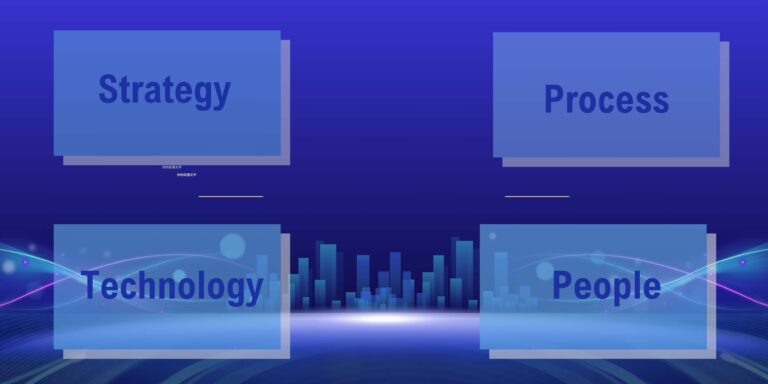Given the idea that customer demands are at an all-time high, companies have to bear the burden of meeting these demands as well as providing the sustained output needed. To achieve this, customer relationship management also known as CRM comes into play but first, what is CRM and why is it important for businesses today? The present article seeks to provide answers to these questions. Examine the goals of CRM and its fundamental components. Look up what are some examples of CRM tools and what are the trends in AI technology.

In this article
1. What is CRM Used For?
The primary goal of any CRM strategy is to facilitate the management of customer relationships, both with existing and potential customers. CRM is more than just software; it is a business philosophy and system designed to enhance interactions with clients. With the aim of maximizing customer satisfaction as well as loyalty and business profitability.
In simplest terms, a CRM relationship management system enables users to centralize customer data for the sake of analysis. A company’s past performance such as what was bought last and what form of communication is preferred is the type of data that needs to be in possession and retrieved for use by relevant departments. It assists in gathering a 360-degree view of the consumers. And the needs of the consumers can be met much faster.
Now, picture this: you’ve just gotten an email from your favorite brand. It even takes it a step further and suggests products that suit your needs precisely. Business Recommendation Systems and television advertisements aren’t similar at all, however. It’s chilling, folks; it’s fascinating relating to a target audience where data is utilized. Automation of routine tasks and the sales process is also part of client relationship management systems. It allows employees to concentrate on what they are supposed to: creating positivity for customers.

2. Why Do We Need Customer Relationship Management?
Ownership benefits can be painfully obvious, even for advocates. Companies – and an increasing complexity of organizations – are pumping a lot into the following setups whose goals should not be ignored: In call centers, when you contact them, they already have a previous record of you. Your CRM seamless systems interface facilitates and enables efficiency. Clients’ satisfaction is elevated and loyalty is built courtesy of sufficient timeous customer support.
CRM can improve customer loyalty
It provides tracking and best practices management to CRM systems for customer retention. Knowing clients’ preferences and behaviors can help companies interact with clients proactively. This inverse escalation frequently avoids situations and transforms satisfied customers into brand ambassadors.
CRM brings Efficiency and effectiveness
The use of the Automation way allows groups to handle green, monotonous activities. It’s as if every other twin running global events can allow their attention to focus on technology and growth.
Informed Decision Making
One of the advantages is the creation and completion of analytics and reporting capabilities that will allow the CRM customer relationship to assist corporations in making even more informed decisions. From predicting sales trends to developing new regions. Insights CRM-based organizations data-determined assist companies Strategize better.
Personalized Marketing and Service
In a period of time when customers require personalized approaches, the importance of the CRM systems comes forward. Doesn’t simply increase conversion rates, but also enhances the customer experience, by segmenting and targeting customers with personalized proposals.

3. What are the 4 Pillars of Customer Relationship Management?
For the CRM practices to be effective all the activities must be built upon the following fundamentals:

1. Pillar of CRM: Strategy
This entails establishing a comprehensive tactic that revolves around CRM which targets customer relations to fit the objectives of the bigger corporation. A strategic CRM plan can reveal underperforming areas and consumers that should be targeted. Areas that should be the focus of spending and how the spending is monitored.
2. Pillar of CRM: Process
Determining steps for formulating a clear strategy allows one to have regular interactions with their manager. This required determining the appearance of the boss. Structure functional sequence of activities and constantly change processes with a focus on integration.
3. Pillar of CRM: Technology
Of course, CRM is not only about technology, but technology plays an important role. But the right equipment is important. This includes software responsiveness that captures and utilizes consumer stats. Communication in real-time Continuous improvement of the system in terms of workflow and analytics.
4. Pillar of CRM: People
It is obvious that the most difficult aspect remains hidden: the people themselves. CRM system has to be properly mastered by all employees. Comprehending how consumers differ. and how to manage the relationships. In-depth training and instructions can enable the users to utilize the full functionality of the CRM system.
4. What are Examples of CRM Tools?
There are a number of essential CRM tools that meet the specific needs of the business. Be it Small organizations, large groups or intermediaries – Here are some popular CRM solutions:
Salesforce: Salesforce has been regarded as a pioneer of the CRM market and avails a wide spectrum that increases protection to revenue. Customer service, advertising, and time marketing pass. An all-cloud structure also makes it more flexible and scalable.
Hubspot CRM: Hubspot fulfills the needs of many start-ups and SMEs with an intuitive and free model. It consists of countermeasures marketing campaign and customer service measures.
QuickCEP: QuickCEP is a state-of-the-art tool that provides a CRM for the modern enterprise allowing for greater management without compromising key aspects of usability. It provides strong analytics and automation features to help businesses improve their interactions with customers and simplify decision-making based on facts. Quickcep is easy to use and integrate making it a complex solution for today’s market requirements.

Microsoft Dynamics 365: This CRM that forms part of the Microsoft ecosystem is also very interactive as it works well with other devices within the Microsoft environment. It also provides complete solutions for revenue, sales, and customer care services and also utilizes AI for better insights.
Pipedrive: Pipedrive has been designed with sales teams in mind. It has the functionality of pipeline management. Methods for quick information checks and easy views to assist the salesperson in selecting focus actions.
5. The Future of CRM: Will it Be Influenced by AI Tech?
There is a bright future for CRM and artificial intelligence will change the whole picture. AI-enhanced assimilation continues within CRM and transforming the nature of business practices between organizations and their clients.

Predictive analytics
Help the entire variety of activities by AI, which can evaluate previous buyers` behaviors and forecast potential movers. Able to foresee necessities and adjust reactions These renowned abilities enable enhanced options and foster greater understanding better understanding with clients.
CRM with AI improved automation
The CRM powered with AI can handle mechanical and time-consuming activities such as calendar booking or alerting the stakeholders about compliance. Efficient use of numerous organizations Quota can be used effectively but the charge of individual liaisons still remains undisturbed.
Natural Language Processing (NLP)
Studies equipped with technology deployed to NPL show that using Interactive Voice Response (IVR) systems improved the ability of chatbots and digital assistants to interpret customer inquiries. This enables prompt resolution of queries And takes away the feeling of sales complexity from human sellers.
AI-powered CRM improved personalization
As always, CRM systems become even more powerful artificial intelligence also enables the cross-pollination of massive datasets to forge incredible profiles. It drives ideas that enhance personalized advertising efforts as well as engagement.
Analytics and integration
It is noted when CRM systems encourage extensive AI application integration these systems can become more agile and offer improved scalability. Makes it possible for teams to seamlessly integrate various applications with the CRM. Most businesses are CRM level.
When firms are navigating a world in which the rate of change in consumer behavior will be rapid, it seems equally more flagrant that the use of CRM, even more than AI will tend to grow. To strive to create a full-fledged and thought-out CRM strategy that is balanced between technical capabilities and customer-focused. It might be the most pertinent for developing a long-term competitive edge.
Conclusion
Businesses of the twenty-first century have customers and customer relationship management at the epicenter. To foster these customers, it involves executing strong initiatives and technologies to build high CRM pillars. These enterprises will be able to establish closer bonds with their client base. These in turn will improve retention and satisfy and increase the growth figures in productivity as AI becomes more and more powerful. Thus, simplifying the architecture of CRM systems. Placing us one step closer to never-before-seen technical personalization. The use of CRM in today’s world enhances customer relations however still has a cluster of strategic inputs in the IT context. Yet a broad strategic viewpoint could enable the organization to be more optimized and effective in the highly competitive market.



